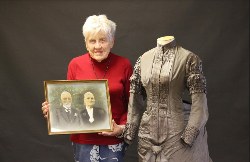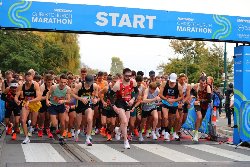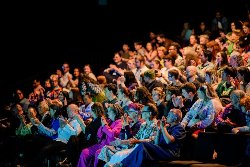New Zealand Symphony Orchestra
Friday, November 22
Reviewer: Max Rashbrooke
With this concert Edo de Waart bowed out as musical director in the same way he began, conducting Mahler. And what a farewell it was! I’ve not been his biggest fan, often finding his interpretations cultured and intelligent but lacking a certain vitality. Here, however, was a near-faultless performance.
Mahler’s Second Symphony (the ‘Resurrection’) is, famously, a stupendously large one, calling for massed forces and hundreds of musicians. It’s also a piece in which the mood varies wildly from movement to movement. But that’s precisely the kind of challenge that de Waart relishes, and all his musical intelligence was on display as he wrestled the potentially unruly material into a completely coherent shape.
The first movement was filled with truly exceptional shading: the crackling energy of the death march, the wistful sweetness of the rising strings, the delicate brass. Beautifully judged from first to last, it was shot through with notes of restrained menace, but never overdone.
The second movement gave off a sense of warm, quotidian happiness. The immense contrast with the first movement was bridged by an absolute continuity in the textures and contours that de Waart summoned from the players. There was a certain sensitivity in the little half-pauses, a sense of the music being allowed to breathe – though at times the woodwinds, especially when playing over the pizzicato strings, could have been gentler.
In the later movements, I would also have liked a sharper delineation of some of the faster, more scurrying passages. But that was a minor point, especially when set beside the truly terrifying fortissimo sections of the fourth movement.
The soloists – mezzo-soprano Anna Larsson and soprano Lauren Snouffer – were also very good; Larsson, with more to do, had room to show off a voice that was both rich and resonant. And with two extremely impressive and carefully drilled choirs joining the final movement – Voices New Zealand and Orpheus – the performance was complete.
That last movement had too many highlights to name. The logic of de Waart’s conception was evident as the soloists worked through the themes; the crescendos had a thudding, visceral impact; and the off-stage brass was beautifully haunting. Once the last notes died away, the applause was heartfelt and prolonged – surely the send-off that de Waart, and everyone else involved, would have wished.
ends



 Whanganui Regional Museum: Historic Wedding Dress Unveiled, A Piece Of Marton’s Heritage
Whanganui Regional Museum: Historic Wedding Dress Unveiled, A Piece Of Marton’s Heritage Donovan Ryan: Local Runner Takes Out Frontrunner Christchurch Marathon
Donovan Ryan: Local Runner Takes Out Frontrunner Christchurch Marathon University of Auckland: Tributes Flow For Much Loved Pacific Leader Melegalenu’u Ah Sam
University of Auckland: Tributes Flow For Much Loved Pacific Leader Melegalenu’u Ah Sam NZEI: Ministry Of Education Cuts Will Disproportionately Affect Pasifika
NZEI: Ministry Of Education Cuts Will Disproportionately Affect Pasifika Day One Hapai te Haeata: Call To Action For Young Filmmakers Against The Backdrop Of Funding Cuts
Day One Hapai te Haeata: Call To Action For Young Filmmakers Against The Backdrop Of Funding Cuts Toyota New Zealand: Three Races For Top Three To Decide TR86 Title
Toyota New Zealand: Three Races For Top Three To Decide TR86 Title